- Home
- Hermann Hesse
Singapore Dream and Other Adventures
Singapore Dream and Other Adventures Read online
Shambhala Publications, Inc.
4720 Walnut Street
Boulder, Colorado 80301
www.shambhala.com
Translation and preface ©2018 by Shambhala Publications, Inc.
All rights reserved. No part of this book may be reproduced in any form or by any means, electronic or mechanical, including photocopying, recording, or by any information storage and retrieval system, without permission in writing from the publisher.
eBook design adapted from printed book design by Claudine Mansour Design
Cover design by Claudine Mansour Design
Cover art © akg-images/Pictures From History
ISBN: 9781611805895
eISBN 9780834841628
Library of Congress Cataloging-in-Publication Control Number: 2017046845
v5.3.1
a
CONTENTS
Translator’s Preface
PART ONE: Sketches and Essays
Night in the Suez Canal
Evening in Asia
Going for a Ride
Visual Pleasures
The Clown
Architecture
Singapore Dream
The Crossing
Pelaiang
Society
Night on Deck
Night in the Forest
Palembang
A Fairy Tale on the Water
The Graves of Palembang
The Maras
Kandy Promenade
Kandy Diary
Pidurutalagala
Return Journey
Asian Travelers
PART TWO: Poetry and Short Fiction
Off the Coast of Africa
Evening on the Red Sea
Arrival in Ceylon
Night in the Cabin
Jungle River
Comfortless
Chinese Night Party in Singapore
On the Malay Archipelago
At Night
Pelaiang
In Sight of Colombo
Robert Aghion
About the Author
E-mail Sign-Up
Hermann Hesse’s Asian journey, 1911
TRANSLATOR’S PREFACE
Singapore Dream and Other Adventures is like a message in a bottle set afloat in Southeast Asian waters in 1911. The messenger is Hermann Hesse. The message—twenty-one eyewitness reports, some poems, and a story—is his account of his voyage to Ceylon and the East Indies (as they were then called). This was Hesse’s actual journey to the East, the experience that became the basis for Siddhartha and his other famous novels. By 1911, Asia had been divided among the European colonial powers and was being wrung for its wealth. By bleeding its colonies for trade, the West was stirring to new ways a perennial “Orient” that had remained essentially unchanged for centuries, perhaps millennia. In 1911 the last imperial dynasty of China was on the brink of collapse. An enormous Chinese diaspora was in place in the lands where Hesse traveled, as well as an Indian one of lesser size. These old peoples and the indigenous Malays were being turned into servant populations, in some places marshaled into masses of cheap or forced labor, referred to by their colonial masters as “coolies.” Hesse arrived on a late swell of this massive sea change, rolling from West to East. As he traveled, he could see “modern” transformations kicking in as superficial layers of new over the old. He did not find the sight edifying.
Hermann Hesse was born in Germany in 1877. He won the Nobel Prize in Literature in 1946, most of his major works having been published long before that. Yet for many English-language readers his name is associated with the countercultural revolution of the 1960s and 1970s, with hippies, LSD, Kerouac, and so on. In 1969 many a copy of Hesse’s ninth novel Siddhartha (published 1922) might have been found lying about on couches in Haight-Ashbury or tucked into backpacks at Woodstock.
What did Hesse, a European writer of earlier decades, the scion of two generations of Protestant missionaries on both sides of his family, have to do with the seekers of the dropout generation? It was Hesse’s probing and intense descriptions of the struggle for authentic experience that reached them. Hesse’s characters rejected expected solutions for their lives and undertook the search for a new personal truth. Through this, Hesse spoke directly to that at once lost and joyous generation. He mirrored their spiritual hunger and explained their discontent with what they saw as a dead-ended, materialistic world. Above all, he showed them the shape of the spiritual journey by supplying the form of a “journey to the East.” Thus he at once confirmed their spiritual quest and gave it a place to go.
As happens with writers who touch a deep chord in human life, Hesse’s name and influence have endured. For Hesse’s legacy, it was never simply a matter of having caught the wave of a particular generation. His work did not belong to the counterculture revolution to begin with; it was only a passenger on that colorfully painted bus, and its relevance, its ability to touch and edify the reader, did not disappear when the bus drove on. Hesse’s brilliance continues to stand out because of his inalienable need to find the real beyond the conventional in experience, the moment out of time. His pilgrim spirit looked to the wisdom of the East and many followed his lead.
In a certain way, the present book, translated here into English for the first time, conveys Hesse’s essential qualities better than his novels do.* This is because in these accounts, Hesse himself is the main character. As he travels, we see directly through his eyes rather than those of a fictional character. Inevitably in novels, perceptions are molded and forced by plot. The character’s thoughts are driven by the author’s plan. In Singapore Dream and Other Adventures, the writer’s pen is free of those constraints. We receive Hesse’s immediate impressions, and he does not sugarcoat. The only slight torsion and drive in these narratives come from the pleasure Hesse gets out of telling a story, expressing authentic experience in an apt and catchy way. He does not falsify, because he is inherently unable. In fact, we feel sympathy for the man, for we see that he is helplessly captivated by his experience. His absolute need of authenticity is something for which he often suffered in his life, was often cast into psychological depths. But it was also this inalienable faithfulness of his engagement with things that caused him to keep growing as a man and a writer. And it is that quality, combined with his undeniable gifts as an entertainer, that continues to draw us into his writings today.
In 1911, with a couple of successful novels already under his belt, Hesse was invited by a friend of his, the painter Hans Sturzenegger, to accompany him to Singapore to visit Sturzenegger’s brother, who was running the family business there. Hesse said yes. It was to be a tour of the islands of the East Indies on the way to Singapore, and of the west coast of India on the way home. Hesse was all but predestined for this journey. His parents and grandparents, both maternal and paternal, had established missions in India to “convert the heathen.” His mother’s father knew nine Indian languages. As a boy in his grandparental and parental households in Germany, Hesse found Indian artifacts and sacred texts—as specimens, as pagan memorabilia. In the end it did not matter that his family looked down upon these things from righteous Christian heights. Hesse’s childhood world was pervaded by the aura of them. A seed was planted, even though it was not the one his family had intended. They wanted him to carry on the family’s missionary tradition, but Hesse dropped
out of his theological studies at the age of fourteen. In 1911 he was lured to the East on new grounds of his own.
Hesse and Sturzenegger embarked on their journey in September of that year. They took the train to Genoa where they boarded a ship. They sailed between Sicily and the toe of Italy, east to Port Said, through the Suez Canal into the Red Sea, and into the Indian Ocean. They made landfall in Colombo, Ceylon (Sri Lanka) on September 23, in just over two weeks. Hesse’s missionary forebears, in the days before the Suez Canal opened in 1869, took over 150 days to reach India, enduring many hardships on the way (as we learn from “Robert Aghion,” at the end of this book). The voyage was much easier in 1911, but there were still long days and nights at sea in the torrid heat. Hesse complained that in one ship, his tiny inferno of a cabin lay right over the engine room; the floor scorched his feet and the porthole was the size of a pocket-watch crystal.
They sailed again, after less than a day in Ceylon, and arrived at Penang Island, off the coast of the Malay Peninsula, four days later, where they were met by Sturzenegger’s brother and bought their tropical suits. The tour of the Indies continued, and it is mainly of those travels that we have Hesse’s marvelous account. But the plan to return by way of the west coast of India, where Hesse’s mother’s family had had their mission, had to be given up. Ill health (dysentery), the heat, and the toil of travel prevented the last leg of the trip. Hesse never reached India. From Penang, he continued on to Singapore, then crossed to Sumatra, where he visited Jambi and Palembang, his farthest point of travel. Overall Hesse spent a bit over five weeks in what was then the Dutch East Indies. By November 11, he was back in Ceylon, and spent about three weeks there. On December 12, he landed again in Genoa. The entire trip had lasted about three months. It was shorter than expected, but it had provided Hesse with deep and formative impressions.
Through and amid the thin layers of colonial influence, Hesse saw the perennial East. What is now a lost world for us was still on view. Hesse wrote as he traveled, thinking perhaps to earn a little money from the newspapers back home, but also because writing was his job, his trade. Besides, as he tells us, it was the only thing that would ease the ennui of heat, insects, and endless hours with nothing to do. In Sumatra, he writes of the ancient city of Palembang (now a commercial hub of two million, replete with skyscrapers). It was then a town of Malays and Chinese, built on stilts, a miracle of a place, a place of incomparable beauty from noon to midnight when it was covered with tidal waters and all its vibrant commerce was afloat throughout the town on colorful junks and rafts; and from midnight to noon, it was a stinking, fetid, malarial swamp, covered with fermenting slime. Hesse travails with the heat and insects in the single “European” hotel; he thinks on the ruins of Italy among the overgrown Chinese and Islamic mausolea in the jungle outskirts of the town; Alexander the Great is reputed to be buried here. He is harried and nearly attacked by a tribe of monkeys in the bayous of the nearby rainforest. In Singapore he tells us of falling asleep in a primitive movie house in the Chinese quarter among the Chinese men with their long queues. In his dream, he sees his father and is deeply moved, but the vision shifts to a missionary being attacked by “gigantic coolies,” who “made both his eyes hang out of their sockets like sausages, and when he tried to pull them back in they prevented him from doing so by tying knots in them.” He sees a beautiful American woman, naked but for a great green snake.
And this gives way to an unforgettable vision of Asia:
Asia was not an area of the world but rather a very specific but mysterious place somewhere between India and China. That is where the various peoples and their teachings and their religions had come from, there lay the roots of all humanity and the source of all life; there stood the images of the gods and the tables of the Law. Oh, how had I been able to forget that, even for a moment!? I had been on my way to that Asia for such a long time already.
This dream image tells us perhaps all we need to know about Hesse’s archetypal vision of Asia and the East. Spiritual penetrations come again, during a nocturnal thunderstorm deep in the Sumatran jungle, as he writes of his discovery of himself as a detached and timeless watcher of things. The outsider quality he feels among the colonizing expatriates is epitomized as he tells us of a dice game played for drinks in a grotesque European social club in a jungle village, where the only salve for Hesse’s revulsion and alienation is the sight of a huge gorgeous moth fluttering around a bare light bulb. We are told of rock temples with gigantic recumbent buddhas. Hesse is led in an opiate delirium through the dark chambers and passages of the Temple of the Tooth in Kandy, where he experiences veneration but decries the degeneration of “pure, beautiful Buddhism” into primitive idolatry. Throughout his journey, he describes the Malays, the Indians, the Chinese, and the Singhalese: their physical beauty, their character and their mores, and their responses to the colonizing Europeans.
At the end of his travel account, in the only piece of fiction here, he tells us the story of a naive young man who, like Hesse himself, is fascinated by butterflies and the wonders of nature, and, as Hesse himself might have been, is sent to India as a missionary to convert the heathen. Never could we hope to find a more vivid depiction of the unprepared Western mind’s encounter with the actual, the real culture of India—and in this tale, with a beautiful woman of the “subject” population. Here a love affair with an astonishing twist lays the paradoxes of the colonial period with its “white man’s burden” directly upon the reader’s soul, as Hesse is so good at doing.
All of this comes to us from a world whose belief in itself, in its civilization, was firmly intact, from the moment just before the First World War cracked and buckled the world’s way of seeing itself. Because of Hesse’s naturally profound and authentic touch, exposure to this past worldview causes the reader to reflect doubly—not only do we see the outlook of that day versus our own current outlook, but with Hesse, we also reflect on the strange and questionable nature of outlooks altogether. Perhaps that is the real message in the bottle.
—Sherab Chödzin Kohn
Boulder, Colorado
* There is only one piece of fiction in this book, “Robert Aghion,” the longish short story that concludes it. This story, and one or two of the poems, are also, to my knowledge, the only parts of this “message in a bottle” that have reached the English reader before now. A partial translation of “Robert Aghion” was published in 1972 by the late Ralph Manheim, whose wide-ranging translations from Céline to Heidegger are always to be appreciated.
PART ONE
SKETCHES
and
ESSAYS
NIGHT IN THE SUEZ CANAL
For two hours now the ship has been under siege by mosquitoes. It’s very hot, and the bright and cheerful mood of the Mediterranean Sea has vanished with astonishing rapidity. Many of the people are simply afraid of the infamous heat of the Red Sea. Most of them are returning home after short vacations and visits or are traveling out here for the first time, but for all of them their homeland now begins to fade from existence—with the heat, the sand, the early sunrises, and the mosquitoes, the East takes hold of them. None of them like it, even though, and maybe because, out here is where some of them earn their money. Only in the second-class restaurant, a few young Germans sit and tipple; most of the passengers are already in their cabins. The Egyptian quarantine official, who has accompanied our ship from Port Said, paces irritably back and forth.
I try to sleep. I lie on the bed in my tiny cabin. Above me the electric fan hums and whirs, the hot dark-blue night looms beyond the little round porthole, the mosquitoes whine. Since Genoa, no night on board has been this still. For hours, the only noise has been the soft rolling of a railroad train from Cairo that appeared atop the long, desolate bank, slid through the ghostly surroundings, and magically disappeared among the reeds in the vast barren landscape.
Before sleep can take me, I am frightened by the e
ngine going suddenly silent. We are dead in the water. I get dressed and go up on deck. All around is an unimaginable silence. From the direction of Sinai shines the waning moon; pale sand dunes show up dead and lusterless in the passing beams of distant searchlights; in the endless black strip of water flash lurid, poisonous reflections; under the heavy, dull moon, a hundred lakes, bogs, pools, and reedy ponds flicker yellow and lifeless out on the sad flatland. Our ship is no longer running; it makes not a peep. It is motionless in the desert, spellstruck but full of reassuring reality.
On the poop deck I run into a small, elegant Chinese man from Shanghai. Upright, he leans on the rail and follows the searchlight with his dark, clever eyes. His pleasant smile is there, as ever. He knows the entire I Ching by heart, he has passed all the Chinese examinations and also some English ones. Now his clear and fluent English floats out over the moonlit water as he compliments me on the beautiful landscapes of Germany and Switzerland. It never occurs to him to laud China, but when he says something in praise of Europe, he says it, however politely, with such superiority that it sounds like a big brother being kind to his little brother and congratulating him on his strong arms. We all know that at this very time in China the great revolution that might cost the emperor his head has newly broken out, and our little fine man from Shanghai surely knows more about it than we do, and it is quite possibly no coincidence that he is presently en route. But he is quiet and untroubled like a mountain summit in the sun, and in his polite, inscrutable, radiant way, turns aside all awkward questions with a winning good cheer that confuses us all and charms me.

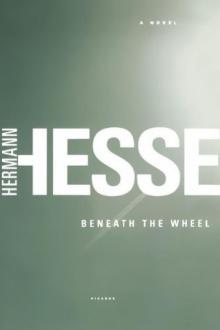 Beneath the Wheel
Beneath the Wheel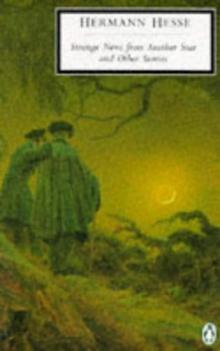 Strange News From Another Star
Strange News From Another Star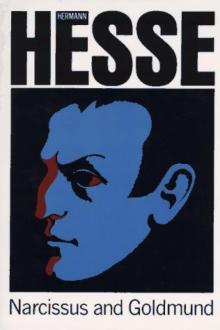 Narcissus and Goldmund
Narcissus and Goldmund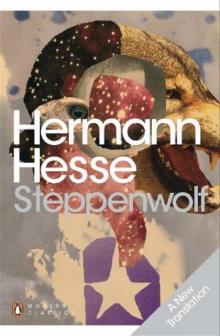 Steppenwolf
Steppenwolf Siddhartha
Siddhartha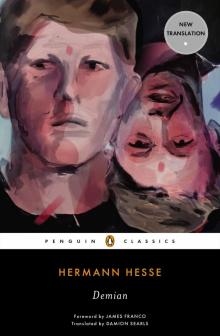 Demian
Demian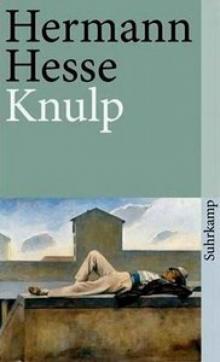 Knulp
Knulp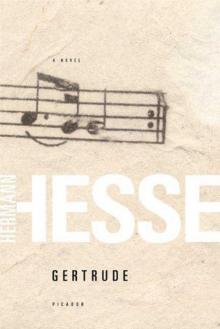 Gertrude
Gertrude Rosshalde
Rosshalde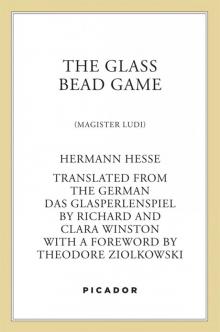 The Glass Bead Game
The Glass Bead Game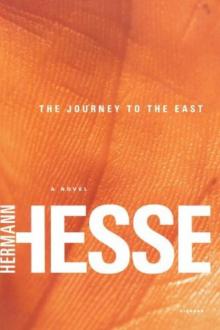 The Journey to the East
The Journey to the East Klingsor's Last Summer
Klingsor's Last Summer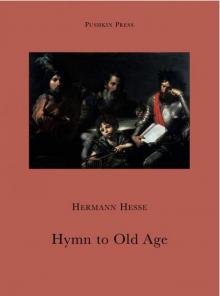 Hymn to Old Age
Hymn to Old Age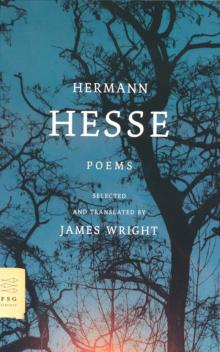 Poems
Poems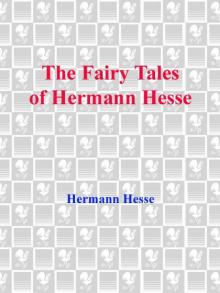 The Fairy Tales of Hermann Hesse
The Fairy Tales of Hermann Hesse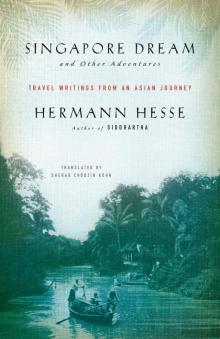 Singapore Dream and Other Adventures
Singapore Dream and Other Adventures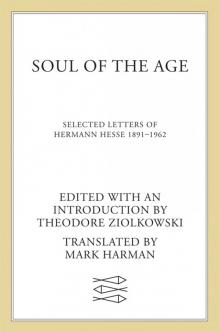 Soul of the Age
Soul of the Age